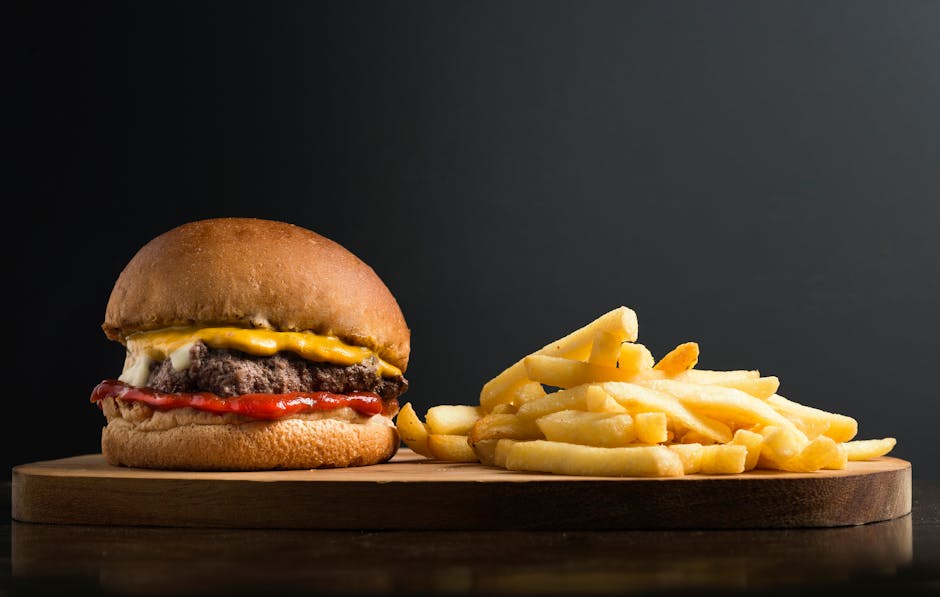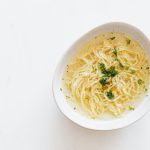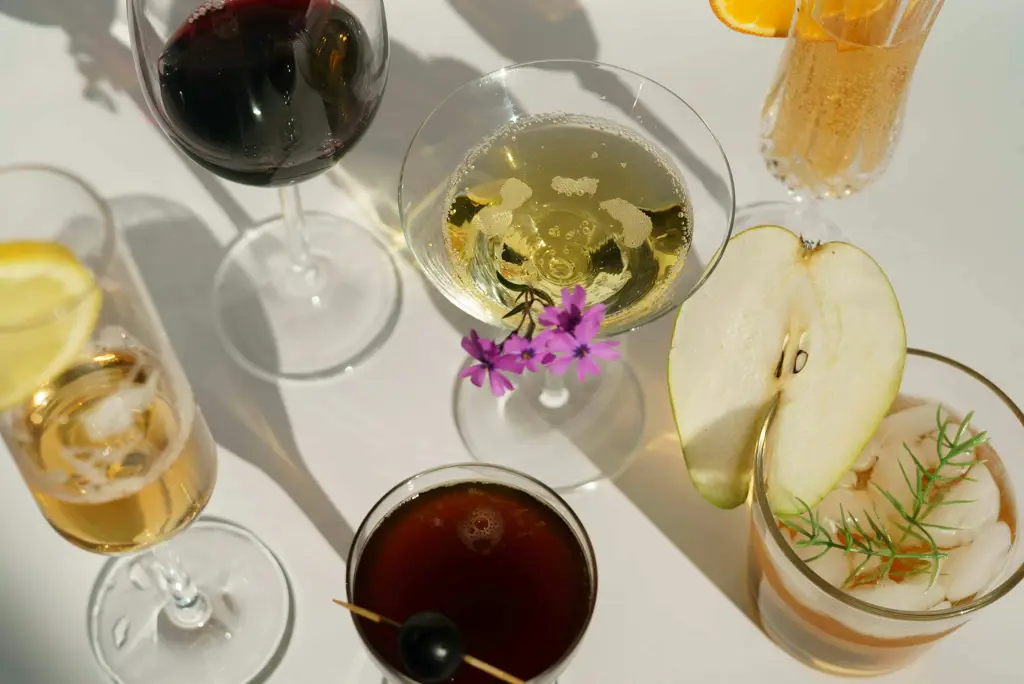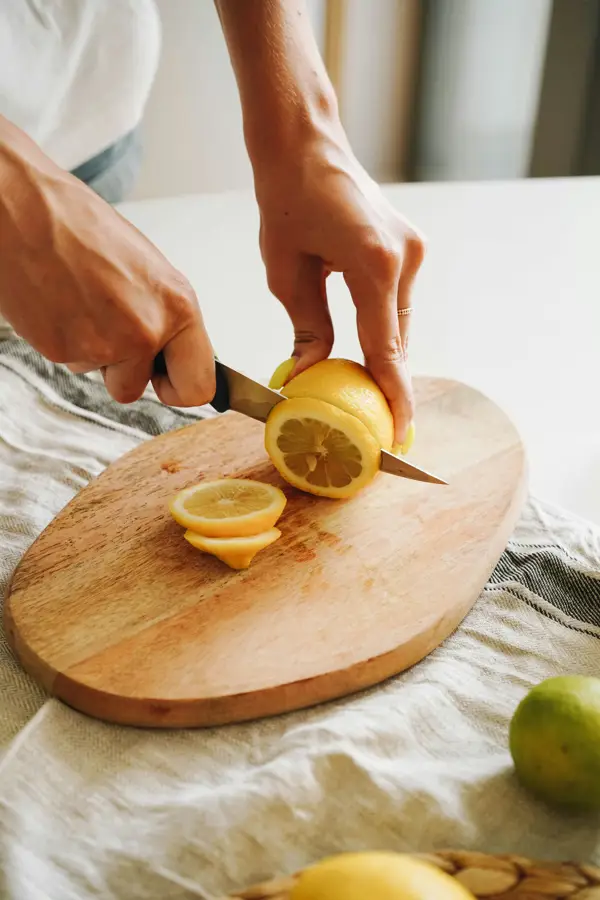Salmon, a culinary staple across the globe, boasts a rich history interwoven with various cultures. Its journey from ancient rivers to modern dinner plates is a testament to its enduring appeal. Evidence suggests that salmon has been consumed by humans for millennia, with archaeological findings indicating its presence in prehistoric diets. Native peoples of the Pacific Northwest, for example, relied heavily on salmon as a primary food source, developing intricate fishing techniques and cultural ceremonies centered around its harvest. These practices, passed down through generations, highlight the deep-seated cultural significance of salmon in indigenous communities.
The method of grilling, a cooking technique dating back to prehistoric times, perfectly complements salmon’s delicate flavor and firm texture. Early forms of grilling likely involved open fires, a practice that continues to hold a special place in many cultures’ culinary traditions. The simplicity and versatility of grilling allow the natural flavors of the salmon to shine through, enhanced only by a touch of seasoning and smoke. In modern times, grilling salmon has evolved, with various techniques and marinades developed to create diverse flavor profiles. From simple lemon-herb preparations to more complex spice blends, the possibilities are endless, catering to a wide range of palates.
The popularity of salmon continues to rise globally. According to the National Oceanic and Atmospheric Administration (NOAA), global salmon production reached over 2.5 million metric tons in recent years. This popularity is driven by both its delicious taste and its nutritional value. Salmon is a powerhouse of essential nutrients, rich in omega-3 fatty acids, protein, and vitamin D, contributing to its perception as a healthy and desirable food choice. This high demand has led to advancements in aquaculture and sustainable fishing practices, highlighting a growing awareness of the importance of responsible consumption.
This recipe aims to capture the essence of perfectly grilled salmon, offering a balance of simplicity and flavor. It leverages the inherent qualities of the fish, letting the natural taste take center stage while allowing for customization based on personal preference. We’ll explore the best techniques for grilling salmon to achieve that coveted flaky texture and smoky aroma, ensuring a culinary experience that honors the rich history and cultural significance of this remarkable fish. Get ready to embark on a culinary journey that celebrates the timeless appeal of perfectly grilled salmon.
Ingredients and Measurements
This recipe yields four generous servings of perfectly grilled salmon. The ingredient list is designed to be straightforward, focusing on high-quality, fresh ingredients to maximize flavor. Feel free to adjust quantities based on your needs, but remember that maintaining the correct ratios is key to achieving optimal results.
Salmon Fillets: You’ll need 4 (6-ounce) salmon fillets, skin on or off, depending on your preference. Look for wild-caught salmon whenever possible, as it tends to have a richer flavor and a firmer texture. Ensure the fillets are roughly the same thickness to ensure even cooking. If your fillets are of varying thicknesses, consider trimming the thicker ones to achieve uniformity. This will prevent some parts from being overcooked while others remain undercooked.
Olive Oil: 2 tablespoons of extra virgin olive oil are needed for both marinating and brushing the salmon during grilling. Extra virgin olive oil has a more robust flavor profile compared to other olive oils, which complements the salmon beautifully. Ensure it’s of good quality for the best taste.
Lemon: One medium-sized lemon is required. You’ll use the juice for the marinade and zest for added flavor complexity. Freshly squeezed lemon juice is always preferable to bottled; the difference in taste is significant. The zest adds a bright, citrusy note that complements the richness of the salmon.
Garlic: Two cloves of garlic, minced or finely grated. Fresh garlic is crucial here. Avoid using pre-minced garlic from a jar, as it often lacks the vibrancy of freshly prepared garlic. If you’re short on time, you can use a garlic press for quick mincing.
Fresh Herbs: For the marinade, we’ll use a combination of fresh herbs. This recipe calls for 1 tablespoon of chopped fresh dill and 1 tablespoon of chopped fresh parsley. Fresh herbs provide a superior flavor and aroma compared to dried herbs. If fresh herbs are unavailable, you can substitute with 1 teaspoon of dried dill and 1 teaspoon of dried parsley, but adjust accordingly, as dried herbs are more concentrated in flavor.
Salt and Black Pepper: Generously season the salmon with salt and freshly ground black pepper to taste. Don’t be shy with the seasoning; the salt enhances the natural flavors of the salmon, while the pepper adds a subtle kick. Use freshly ground black pepper for the best flavor and aroma.
Optional additions: To elevate the flavor profile even further, consider adding a pinch of red pepper flakes for a touch of heat or a teaspoon of honey for a hint of sweetness to the marinade. These additions are entirely optional and depend on your personal preferences.
Important Note: Always ensure your ingredients are fresh and of high quality. Properly measuring your ingredients is crucial for consistent results. Using a kitchen scale for more precise measurements, especially for the salmon fillets, is highly recommended.
Equipment List
Grilling salmon to perfection requires the right tools. This list details the equipment needed, along with recommendations for optimal results. While some items are essential, others enhance the grilling experience and contribute to a superior final product.
1. Grill: The foundation of this recipe is, of course, your grill. Gas grills offer consistent heat control, ideal for achieving even cooking. Charcoal grills, while requiring more attention to temperature management, impart a smoky flavor many appreciate. Regardless of your choice, ensure your grill is clean before starting. A clean grill prevents sticking and ensures the salmon doesn’t absorb unwanted flavors.
2. Grill Pan (Optional but Recommended): A grill pan is highly recommended, especially for those new to grilling fish. It provides a contained cooking surface, preventing the delicate salmon fillets from falling through the grill grates. Look for a grill pan with good quality, heavy-duty construction for even heat distribution. A 12-inch square or rectangular pan is a good size for 2-4 salmon fillets, depending on their thickness. If using a grill pan, preheat it on the grill for about 5 minutes to ensure optimal searing.
3. Grill Brush: Essential for cleaning your grill grates before and after cooking. A sturdy wire brush is effective for removing stubborn residue. For extra cleaning power, consider a grill cleaning stone after the grill has cooled down. Always use a grill brush with caution, ensuring the bristles are securely attached to avoid accidental ingestion.
4. Tongs: Long-handled tongs are crucial for safely maneuvering the salmon fillets on and off the grill. They provide a firm grip without puncturing the delicate flesh. Choose tongs with a locking mechanism for easy storage. A 12-16 inch length is ideal for reaching across the grill safely.
5. Fish Spatula: A thin, wide spatula is very helpful for gently lifting and flipping the salmon fillets. This is especially important if you’re using a grill pan to avoid breaking the delicate flesh. Ensure your spatula is made of a material that won’t scratch your grill pan’s surface.
6. Meat Thermometer: A reliable instant-read meat thermometer is paramount for ensuring the salmon is cooked to perfection. Internal temperature is the best indicator of doneness, rather than relying solely on visual cues. Aim for an internal temperature of 145°F (63°C) for medium-well salmon. Invest in a quality thermometer for accurate readings.
7. Basting Brush (Optional): A basting brush allows you to evenly apply marinade or glaze to the salmon during cooking, enhancing both flavor and moisture. A silicone basting brush is easy to clean and heat-resistant.
8. Aluminum Foil (Optional): Aluminum foil can be used to create a makeshift packet for grilling if you prefer a less hands-on approach or if you are using a charcoal grill with uneven heat distribution. This helps maintain moisture and ensures even cooking.
9. Serving Platter: Once your perfectly grilled salmon is ready, you’ll need a stylish platter to present it beautifully. Choose a platter that complements your meal and enhances the dining experience.
Preparation of Salmon
Preparing your salmon correctly is crucial for achieving that perfect grilled result – juicy, flaky, and bursting with flavor. This section details the steps to ensure your salmon is ready for the grill, maximizing its delicious potential.
First, you’ll need to choose your salmon fillet. Aim for a fillet that’s about 1-1.5 inches thick. Thicker fillets will require a slightly longer grilling time, but they’re less prone to overcooking. Look for salmon with bright, moist flesh and a fresh, slightly salty aroma. Avoid fillets with dull coloring or a strong fishy smell.
Once you’ve selected your fillet, gently pat it dry with paper towels. Removing excess moisture is key. A dry surface helps the salmon achieve a beautiful sear on the grill, preventing it from steaming and becoming mushy. This step might seem minor, but it significantly impacts the final texture and taste.
Next, we’ll season the salmon. For a classic preparation, use 1 teaspoon of salt and ½ teaspoon of freshly ground black pepper per 4 ounces of salmon. Gently rub the seasoning into both sides of the fillet, ensuring even coverage. Don’t be shy with the salt; it enhances the salmon’s natural flavors.
Optional seasonings can elevate your grilled salmon to new heights. Consider adding other spices like paprika, garlic powder, onion powder, or even a pinch of cayenne pepper for a little heat. Experiment with different herb combinations such as dill, thyme, or rosemary. Finely chopped fresh herbs can be sprinkled directly onto the seasoned salmon for a vibrant burst of fresh flavor.
For an extra layer of flavor, you can create a simple marinade. A classic marinade might consist of 2 tablespoons of olive oil, 1 tablespoon of lemon juice, and a mix of your favorite herbs. Marinate the salmon for at least 30 minutes, or up to 2 hours in the refrigerator. Do not marinate for longer than 2 hours as this can lead to the salmon becoming overly soft and prone to falling apart.
Before grilling, let the salmon come to room temperature for about 15-20 minutes. This ensures even cooking. If you’re grilling directly from the refrigerator, the outside may cook before the inside is fully done.
Finally, remember to prepare your grill. Ensure it’s clean and preheated to medium-high heat. This is crucial for achieving those perfect grill marks and a delicious sear. With your salmon properly prepared, you’re ready to move on to the grilling process and enjoy a truly exceptional meal.
Grilling Techniques for Perfect Salmon
Grilling salmon perfectly requires understanding a few key techniques. While seemingly simple, mastering the heat, timing, and preparation ensures a juicy, flavorful, and beautifully cooked fish every time. This section will guide you through the process, equipping you with the knowledge to grill salmon like a pro.
Preparation is Key: Before even thinking about the grill, prepare your salmon fillets. Pat them dry with paper towels; this is crucial for achieving a good sear. Excess moisture will prevent proper browning and lead to steaming rather than grilling. Season generously on both sides with salt and freshly ground black pepper. You can also add other seasonings, such as garlic powder, paprika, or dill, to your taste. For a 4-6 ounce salmon fillet, approximately 1/2 teaspoon of salt and 1/4 teaspoon of black pepper is a good starting point.
Choosing Your Grill: Gas grills offer consistent heat control, making them ideal for beginners. Charcoal grills provide a smoky flavor, but require more experience to manage the temperature effectively. Regardless of your grill type, ensure it’s thoroughly cleaned and preheated to medium-high heat (approximately 400-450°F or 200-230°C) before placing the salmon on the grates. You should be able to hold your hand about 4-6 inches above the grates for only 2-3 seconds. If it’s too hot, reduce the heat; if it’s too cool, increase the heat.
Oil the Grates: Lightly oil the grill grates with a high-heat oil, such as canola or grapeseed oil, to prevent sticking. Use a paper towel to apply a thin layer; avoid excessive oil, which can cause flare-ups. This step is essential for easy release and prevents the salmon from adhering to the grates.
Grilling the Salmon: Carefully place the salmon fillets skin-side down on the preheated, oiled grates. Avoid overcrowding the grill; this will lower the temperature and result in uneven cooking. Grill for 4-6 minutes undisturbed, allowing the skin to crisp and adhere to the grates. This creates a beautiful, crispy skin and prevents the fish from sticking. For a 4-6 ounce fillet, this time is usually sufficient to get a good sear.
Flipping and Finishing: Once the skin is nicely browned and easily releases from the grates, carefully flip the fillets using a spatula. Grill for another 3-5 minutes on the flesh side, depending on the thickness of the fillets and desired doneness. Use a meat thermometer to ensure the internal temperature reaches 145°F (63°C) for optimal safety and a flaky, moist texture. Avoid overcooking, as this will result in dry, tough salmon.
Resting is Important: Once cooked, remove the salmon from the grill and let it rest for 2-3 minutes before serving. This allows the juices to redistribute, resulting in a more tender and flavorful fillet. Serve immediately and enjoy your perfectly grilled salmon!
Troubleshooting: If your salmon is sticking to the grates, it’s likely due to insufficient oiling or insufficient heat. If the salmon is cooking too quickly, reduce the heat. If it’s cooking too slowly, increase the heat.
Sauce Preparation (if applicable)
While grilled salmon is delicious on its own, a flavorful sauce can elevate the dish to a whole new level. This recipe offers a versatile option: a vibrant and tangy lemon-dill sauce that perfectly complements the richness of the salmon. However, feel free to adapt it to your preferences or explore other sauce options, such as a creamy teriyaki, a spicy sriracha mayo, or a classic chimichurri.
For the Lemon-Dill Sauce: This recipe yields approximately ½ cup of sauce, enough for 2-4 salmon fillets.
Ingredients:
- ¼ cup fresh lemon juice (about 1 large lemon)
- 2 tablespoons olive oil (preferably extra virgin)
- 2 tablespoons finely chopped fresh dill
- 1 tablespoon Dijon mustard
- 1 teaspoon honey or maple syrup (optional, for added sweetness)
- ½ teaspoon garlic powder
- ¼ teaspoon salt
- ⅛ teaspoon black pepper
Instructions:
- Combine ingredients: In a small bowl, whisk together the lemon juice, olive oil, dill, Dijon mustard, honey (if using), garlic powder, salt, and pepper until well combined and emulsified. Ensure the honey or maple syrup is thoroughly incorporated to prevent crystallization.
- Taste and adjust: Taste the sauce and adjust the seasoning as needed. You might want to add more lemon juice for extra tang, more honey for sweetness, or more dill for a stronger herby flavor. Don’t be afraid to experiment!
- Rest the sauce: Allow the sauce to sit for at least 15 minutes at room temperature. This allows the flavors to meld and deepen, creating a more complex and delicious sauce. Refrigerate any leftover sauce in an airtight container for up to 3 days.
- Serve: Drizzle the lemon-dill sauce generously over the grilled salmon fillets just before serving. The warmth of the salmon will enhance the flavors of the sauce.
Professional Recommendations:
- Use fresh ingredients: Fresh dill and lemon juice make a significant difference in the flavor of the sauce. Avoid using dried herbs, as they lack the vibrancy of fresh herbs.
- Emulsify properly: Whisking the ingredients vigorously ensures that the oil and lemon juice are properly emulsified, creating a smooth and creamy sauce. If you prefer a thicker sauce, you can add a teaspoon of cornstarch mixed with a tablespoon of cold water to the mixture before whisking.
- Consider variations: Feel free to experiment with different herbs and spices to customize the sauce to your liking. Adding a pinch of red pepper flakes can give it a spicy kick, while a tablespoon of capers adds a briny element.
- Don’t over-sauce: While the sauce enhances the salmon, too much can overpower the delicate flavor of the fish. Start with a moderate amount and add more if needed.
Alternative Sauce Ideas: For a richer sauce, consider a creamy tarragon sauce made with crème fraîche. For a spicier option, try a chili-lime sauce. A simple pan sauce made with butter, garlic, and white wine also pairs beautifully with grilled salmon. Remember to adjust the quantities of ingredients based on the number of servings.
Side Dish Suggestions
To complement the rich flavor of your perfectly grilled salmon, choosing the right side dishes is crucial. The ideal accompaniments should offer a balance of textures and tastes, enhancing the overall dining experience without overpowering the main course. Here are some suggestions to elevate your grilled salmon meal:
Asparagus with Lemon-Garlic Butter: This classic pairing is both simple and elegant. Toss 1 pound of asparagus spears with 2 tablespoons of olive oil, 1 tablespoon of lemon juice, 2 cloves of minced garlic, salt, and pepper. Grill alongside your salmon for approximately 8-10 minutes, or until tender-crisp. The bright citrus notes of the lemon perfectly cut through the richness of the salmon, while the garlic adds a savory depth.
Roasted Vegetables: A medley of roasted vegetables provides a vibrant and nutritious side. Toss 1 cup each of chopped broccoli florets, bell peppers (any color), and red onion with 2 tablespoons of olive oil, 1 teaspoon of dried oregano, ½ teaspoon of salt, and ¼ teaspoon of black pepper. Roast at 400°F (200°C) for 20-25 minutes, or until tender and slightly caramelized. Consider adding other vegetables like zucchini, carrots, or Brussels sprouts to customize your medley.
Quinoa Salad with Herbs and Feta: For a lighter and more refreshing option, a quinoa salad is an excellent choice. Cook 1 cup of quinoa according to package directions. While still warm, gently toss with ½ cup of chopped cucumber, ½ cup of chopped tomatoes, ¼ cup of crumbled feta cheese, ¼ cup of chopped fresh parsley, 2 tablespoons of olive oil, 1 tablespoon of lemon juice, salt, and pepper to taste. The protein-rich quinoa adds a satisfying element, while the fresh herbs and feta provide a delightful burst of flavor.
Garlic Parmesan Roasted Potatoes: These crispy and flavorful potatoes are a hearty and crowd-pleasing side. Cut 2 pounds of potatoes into 1-inch cubes. Toss with 4 tablespoons of olive oil, 4 cloves of minced garlic, ½ cup of grated Parmesan cheese, salt, and pepper. Roast at 400°F (200°C) for 30-40 minutes, or until golden brown and tender. For extra flavor, consider adding fresh rosemary or thyme to the potatoes before roasting.
Simple Green Salad: Don’t underestimate the power of a simple green salad. A bed of mixed greens tossed with a light vinaigrette provides a refreshing counterpoint to the richness of the salmon. Experiment with different dressings, such as a lemon-herb vinaigrette or a balsamic vinaigrette, to find your favorite. Adding toasted nuts or seeds can also add a nice textural element. Remember to adjust the quantity based on the number of servings.
Important Note: When planning your side dishes, consider the overall balance of flavors and textures. If you choose a heavier side dish like roasted potatoes, opt for a lighter salad or vegetable to balance the meal. Conversely, a lighter quinoa salad pairs well with a heartier vegetable option.
Best Grilled Salmon Recipe: Recommendations
This grilled salmon recipe is designed for optimal flavor and texture. To ensure the best results, follow these recommendations carefully. Proper preparation is key to achieving perfectly cooked, juicy salmon.
Serving Suggestions: This recipe’s versatility allows for diverse serving options. For a simple yet elegant meal, serve the grilled salmon with a side of steamed asparagus or roasted broccoli. The slight bitterness of the vegetables beautifully complements the richness of the salmon. Alternatively, a vibrant summer salad with mixed greens, cherry tomatoes, cucumbers, and a light vinaigrette offers a refreshing counterpoint to the grilled fish. For a more substantial meal, consider serving the salmon over a bed of quinoa or brown rice, adding a boost of healthy carbohydrates and fiber.
Complementary Dishes: To enhance your dining experience, consider pairing your grilled salmon with complementary dishes. A creamy lemon-dill sauce adds a bright, herbaceous touch that elevates the salmon’s flavor profile. A vibrant salsa, incorporating fresh mango, avocado, red onion, and cilantro, offers a zesty and refreshing contrast. For a richer flavor, a garlic-herb butter melted over the salmon during the last few minutes of grilling adds incredible depth. Don’t forget about the possibilities of a simple lemon wedge to squeeze over the finished dish for extra brightness.
Storage Conditions: Leftover grilled salmon should be stored properly to maintain its quality and prevent spoilage. Allow the salmon to cool completely before storing it in an airtight container in the refrigerator. It’s best to consume the salmon within 2-3 days of grilling for optimal freshness and flavor. You can also freeze the leftover salmon for longer storage; wrap it tightly in freezer-safe plastic wrap or aluminum foil to prevent freezer burn. Frozen salmon can be stored for up to 3 months. Remember to thaw it completely in the refrigerator before reheating.
Nutritional Information (per serving, approximate): The nutritional content will vary slightly depending on the size of the salmon fillet and the specific ingredients used in the marinade and accompanying dishes. However, a typical serving of grilled salmon (approximately 4 ounces) provides roughly: Calories: 200-250; Protein: 20-25g; Fat: 10-15g (mostly healthy omega-3 fatty acids); Carbohydrates: 0-5g. This makes it a healthy and satisfying meal option, rich in protein and essential nutrients. Please note that these are estimates, and the exact nutritional values may vary.
Important Note: Always ensure that the salmon is cooked to an internal temperature of 145°F (63°C) to ensure it is safe for consumption. Use a food thermometer to check the temperature in the thickest part of the fillet. Overcooking can result in dry, tough salmon, so it’s important to monitor the grilling process carefully and remove the salmon from the grill as soon as it reaches the desired temperature.





